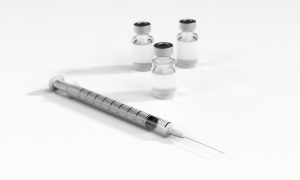
Osteoarthritis is the degeneration of the cartilage that cushions the ends of bones. This causes stiffness, pain, swelling, and loss of mobility in the affected joint. It is the fifth leading cause of disability in the world, affecting 10% of the world’s population 60 years of age and older. In high-income countries, up to 80% of people aged 65 and older will suffer from osteoarthritis. In the United States, it is the most common cause of disability in adults. More than 30 million Americans suffer from this condition and 14 million have symptomatic knee osteoarthritis.
Viscosupplementation is one type of treatment for this condition. It was developed in Europe in the 1980s specifically to treat knee osteoarthritis. In 1997, the U.S. Food and Drug Administration approved it “for the treatment of pain in osteoarthritis … of the knee in patients who have failed to respond adequately to conservative non-pharmacologic therapy and simple analgesics, e.g. acetaminophen.”1
Viscosupplementation is a medical procedure in which a gel-like fluid containing synthetic hyaluronic acid is injected into a joint to treat symptoms of osteoarthritis. The fluid provides cushioning for the bones. Hyaluronic acid is naturally secreted by mesothelial cells present in the joints. Treatments are performed once a week for three to five weeks. Some newer forms only require one injection. Once the pain and swelling from the procedure itself dissipate, some patients experience reduced arthritis pain and better mobility for up to 6 months. Others may not experience any pain relief at all. Viscosupplementation is generally prescribed for people who have early, mild to moderate knee osteoarthritis, patients who previously have taken NSAID pain relievers but whose pain was not alleviated. Some brand names include Synvisc, Euflexxa, Orthovisc, Hyalgan, and Monovisc, to name a few.
Today’s market size shows the amount spent on viscosupplementation worldwide in 2016 and projected for 2026. Demand for viscosupplementation treatments is expected to increase due to the preference for minimally-invasive procedures, the growing geriatric population worldwide and the increase in the number of people who have conditions that make them prone to osteoarthritis such as obesity, diabetes, hypertension, cardiovascular disease, and trauma to the joints due to repetitive movements. Several leading companies in this industry include Sanofi, Allergan, Hoffmann-La Roche, Zimmer Biomet, Smith & Nephew Plc, Anika Therapeutics Inc., Fidia Farmaceutici S.P.A., Ferring B.V., Bioventus, Regen Lab SA, among others.
1 Source: “American College of Rheumatology Position Statement” available online here.Geographic reference: World
Year: 2016 and 2026
Market size: $3 billion and $6.6 billion, respectively
Sources: “Viscosupplementation Market by Product (Single Injection, Three Injection, Five Injection), by Region (North America, Europe, Asia Pacific, Latin America, MEA), and Segment Forecasts, 2018 – 2025,” Grand View Research, August 2017 available online here; “Viscosupplementation Market Size to Cross 6.6 billion USD by 2026,” MarketWatch Press Release, April 15, 2019 available online here; “Osteoarthritis,” Mayo Clinic, March 6, 2018 available online here; Beth W. Orenstein, “A Closer Look at Knee Injections,” Healthgrades, Reviewed by William C. Lloyd III June 12, 2017 available online here; “American College of Rheumatology Position Statement” available online here; “Hyaluronic Acid (Injection Route),” Mayo Clinic, February 1, 2019 available online here; Arthritis by the Numbers: Book of Trusted Facts & Figures, Arthritis Foundation, 2018 available online here; “Viscosupplementation Market: Hyaluronic Acid Type (Stabilized Hyaluronic Acid), Procedure Type (Three-Injection Procedure), Application, and Region (Asia-Pacific, Europe, North America, Latin America, and Middle East & Africa) — Global Forecast till 2023,” Market Research Future, March 2019 available online here.
Image source: qimono, “syringe-shot-medicine-bottle-1884758,” Pixabay, December 6, 2016 available online here.
